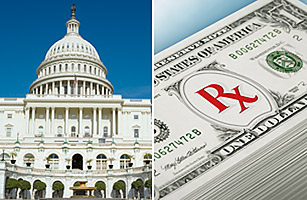Share this
From GreenvilleOnline.com:
By Liv Osby• Staff writer• Published: June 07. 2011 2:00AM
Health-care providers across South Carolina will take a hit to their 2012 Medicaid reimbursements, and state officials, providers and advocates for the disabled and elderly disagree on whether that could impact access to care.
The measure takes effect July 8 and will help ensure the long-term viability of the program for low-income residents, said Tony Keck, director of the state Department of Health and Human Services, which administers the $5.8 billion Medicaid program.
“Medicaid directors in red and blue states are generally forecasting fiscal train wrecks in the coming years,” he said.
“Ultimately, the state must continue to drive excess cost out of the entire system if we are to truly have any chance of making health care more affordable to more people and to prevent health-care costs from overwhelming our state budget.”
Advocates for the disabled and elderly said the cuts were expected, and they worry about access.
“We’re always concerned about the impact of these types of cuts on the safety, security and services for our clients,” Anna Maria Darwin, an attorney with Protection and Advocacy for People with Disabilities, told GreenvilleOnline.com.
“Everything has an impact. You don’t know how each provider is going to be able to deal with it.”
Some rural areas have only one provider, and it’s difficult to get services at all, she said. Some may have to cut staff or close their doors, she said.
And Teresa Arnold, advocacy director for AARP South Carolina, said there are concerns about existing waiting lists.
“The waiting list for home and community-based services is over 4,000,” she said. “Will these changes cause that number to grow?”
Providers said the cuts could impact the services they offer, particularly on the heels of earlier cuts.
DHHS cut rates 3 percent in April, saving $38.6 million, and anticipated 10 percent cuts in fiscal 2012. But the new cuts, which will save $52.5 million, range from 2 percent for most physicians to 4 percent for most inpatient and outpatient hospital services, said DHHS spokesman Jeff Stensland.
The proposal also uses quality improvement initiatives to reduce spending, he said. For example, about $18.5 million will be saved by reducing the number of elective Cesarean sections, allowing more disabled residents to get home-based services, and other measures.
“The bottom line is they had to find $125 million and in general, hospitals make up about a third to 40 percent of the Medicaid budget,” he said. “We’re happier than we would have been with the straight 10 percent cut. But it will be a challenge for a number of hospitals.”
Dr. Robert R. Morgan Jr., president of the Greenville County Medical Society, said some doctors will be forced to take fewer Medicaid patients.
“We understand these are difficult economic times, but we’re approaching the … breaking point for a lot of groups,” he said. “At some point, it’s no longer financially viable.”
The South Carolina Medical Association agreed but said targeted cuts were the way to go.
“While there are no winners in this situation, we believe director Keck made strong efforts to deliver our common goal — ensuring that our state’s patients are properly cared for and preserving the integrity of the Medicaid program,” said SCMA immediate past president Dr. Gregory Tarasidis.
And Carmelo Cinqueonce, CEO of the South Carolina Pharmacy Association, said the cuts will be tough for druggists.
“We understand the fiscal crisis,” he said. “But we’re very concerned, particularly for independent pharmacists. We foresee many will be hurt by this. They may reduce hours, cut back staff or go out of business. Some could stop taking Medicaid patients. And in rural parts of the state, they may be the only pharmacy for miles around.”
Stensland said access hasn’t been a big problem in other states where rates have been cut.
“We don’t think access is going to be an issue,” he said. “But if issues arise, we will make adjustments.”
DHHS said it also wants to reduce duplicative services, inefficiency and fraud. The measure also includes savings for reducing hospital readmissions and eliminating payment for hospital-acquired infections, which Stalvey said SCHA suggested.
Providers also called for increasing the co-pay, which went from $2.30 to $3.30 for doctor and other provider visits, and expanding managed care.
Share this
Contact Us
Have questions? Send us a private message using the form below.


